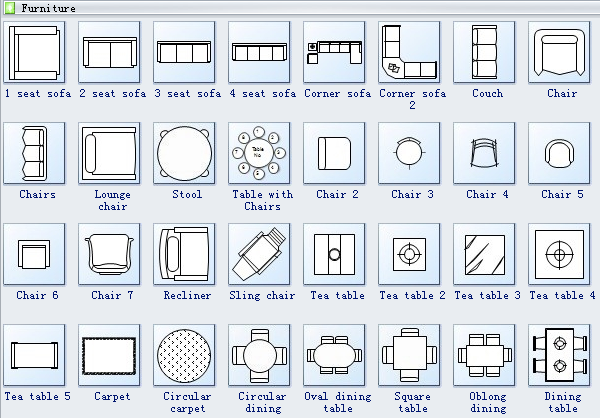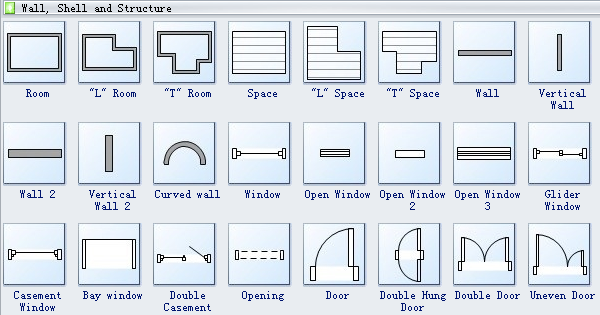Floor Plan Symbols Meaning: Understanding the Language of Building Designs
By Abu Rizal at: April 08, 2020
When it comes to building design, floor plans are a critical aspect of the process.
A floor plan is a visual representation of a building's layout, depicting the arrangement of rooms, walls, doors, windows, and other architectural features.
To create a floor plan, architects and builders use a standardized set of symbols to convey specific design elements. In this article, we'll explore the most common floor plan symbols and their meanings.
Walls
Walls are the backbone of any building, and they're represented by a variety of symbols on floor plans. The most common symbol for walls is a solid line, which indicates a permanent wall.A dashed line represents a temporary or movable wall, while a dotted line is used to represent a partition wall, which divides a room into smaller spaces.
Doors
Doors are another essential aspect of building design, and they're represented by a variety of symbols on floor plans.A typical door is represented by a straight line with an arc at the top, indicating the direction the door opens. Double doors are represented by two parallel lines with a curve at the top.
Windows
Windows are another vital component of building design, providing natural light and ventilation.A typical window is represented by a rectangle with diagonal lines indicating the direction of the window sash. A double-hung window is represented by two rectangles, one above the other, with diagonal lines in opposite directions.
Stairs
Stairs are a common architectural feature, providing access between different levels of a building.On floor plans, stairs are represented by a series of parallel lines with small dashes perpendicular to the lines indicating the direction of the stairs. An arrow is often included to indicate the direction of travel.
Electrical
Electrical symbols on floor plans indicate the location of electrical outlets, light fixtures, and other electrical components.A circle with a dot in the center represents an electrical outlet, while a circle with an "X" indicates a light fixture. A zigzag line represents an electrical switch, and a straight line with a circle at the end represents a ceiling fan.
Plumbing
Plumbing symbols on floor plans indicate the location of pipes, fixtures, and other plumbing components.A circle with a cross in the center represents a drain, while a circle with a small vertical line and a cross indicates a toilet.
A circle with a dot in the center represents a sink, and a circle with three lines indicates a shower or bathtub.
HVAC
HVAC (heating, ventilation, and air conditioning) symbols are used to indicate the placement of heating and cooling elements in a building.These symbols can represent everything from air vents and ductwork to radiators and heat pumps.
Furniture
Furniture symbols are used to indicate the placement of furniture in a space.These symbols can range from simple geometric shapes like squares and circles to more detailed representations of specific pieces of furniture like beds or sofas.
In some cases, furniture symbols may also indicate the size and scale of the piece of furniture.
Conclusion
Floor plans are an essential part of the building design process, providing a visual representation of the layout and structure of a building.Understanding the symbols used on floor plans is crucial for architects, builders, and homeowners to communicate design ideas and ensure that construction proceeds smoothly.
By familiarizing yourself with the common floor plan symbols and their meanings, you'll be better equipped to read and interpret floor plans with confidence.










